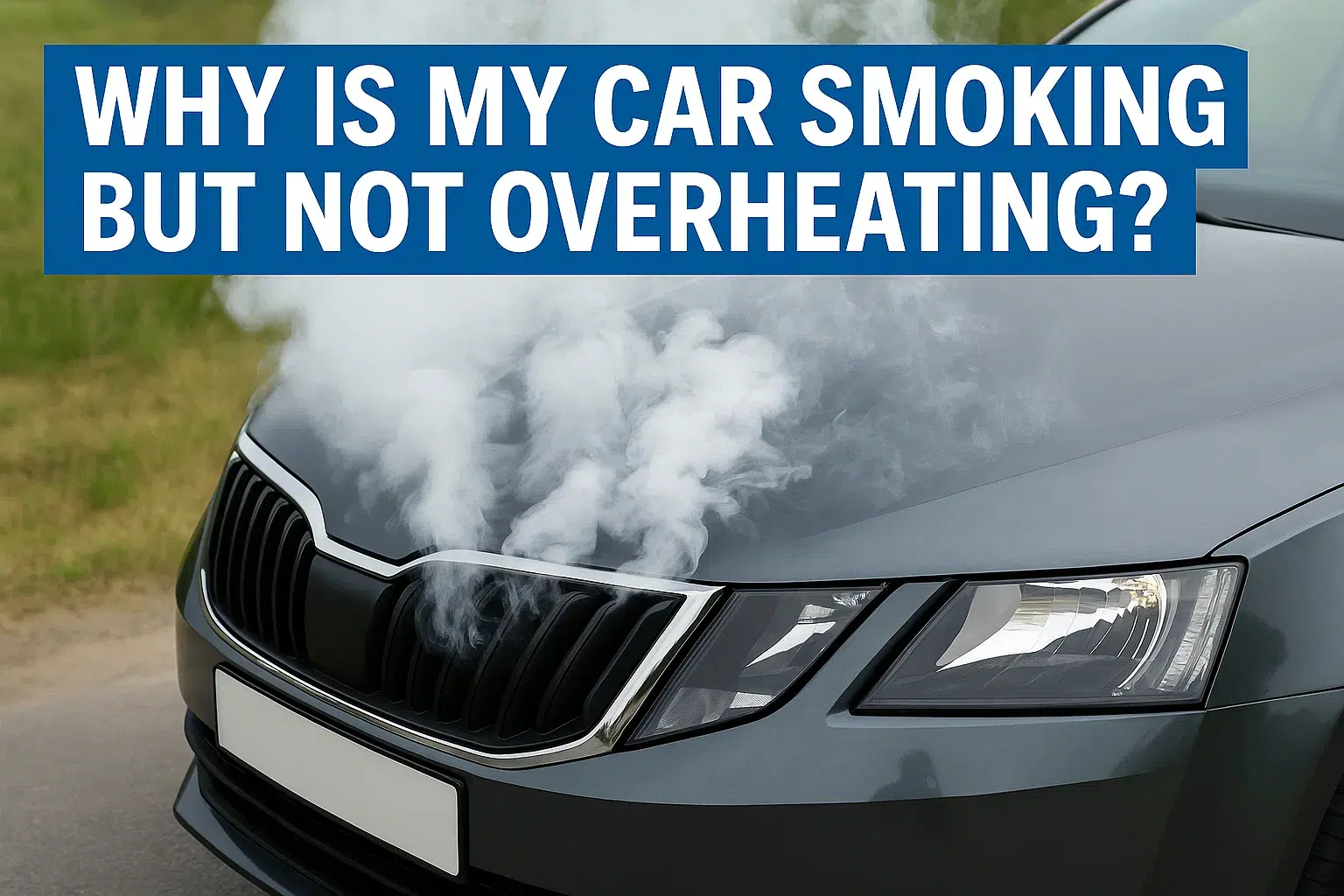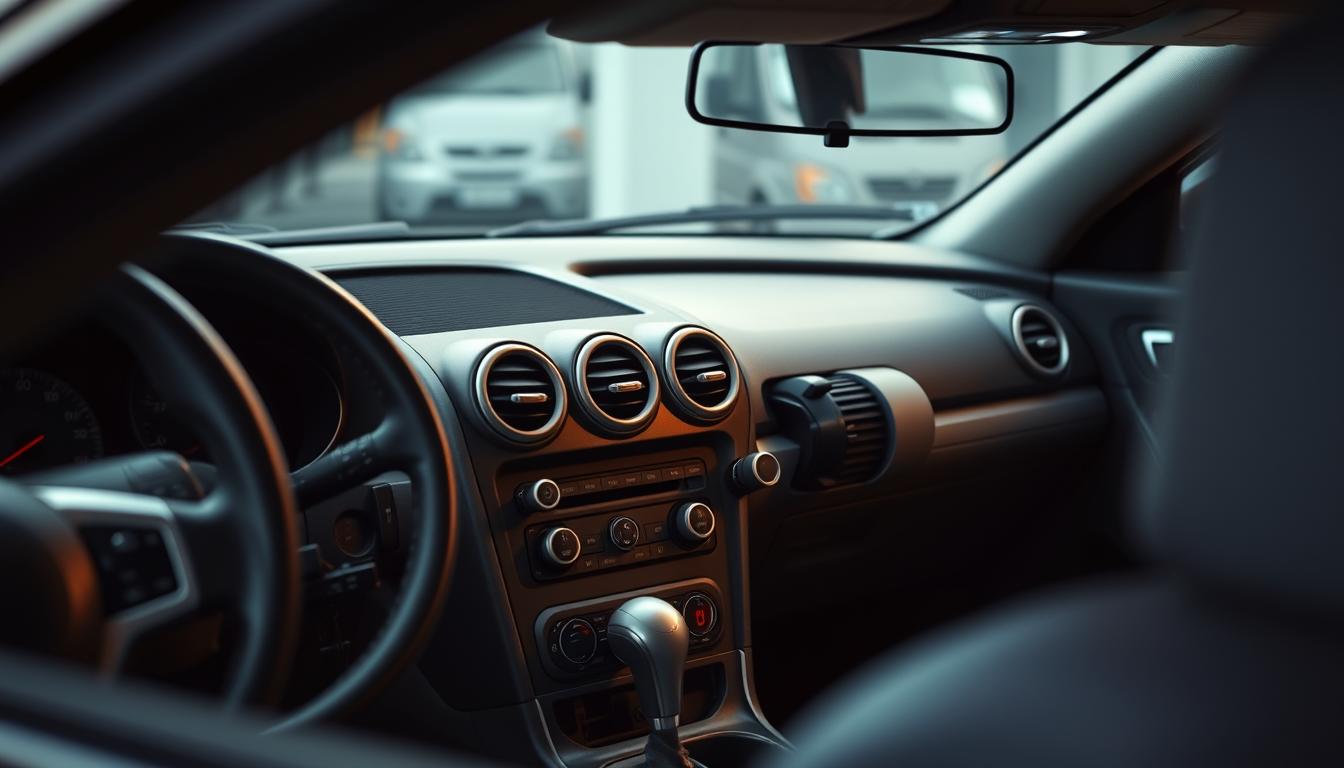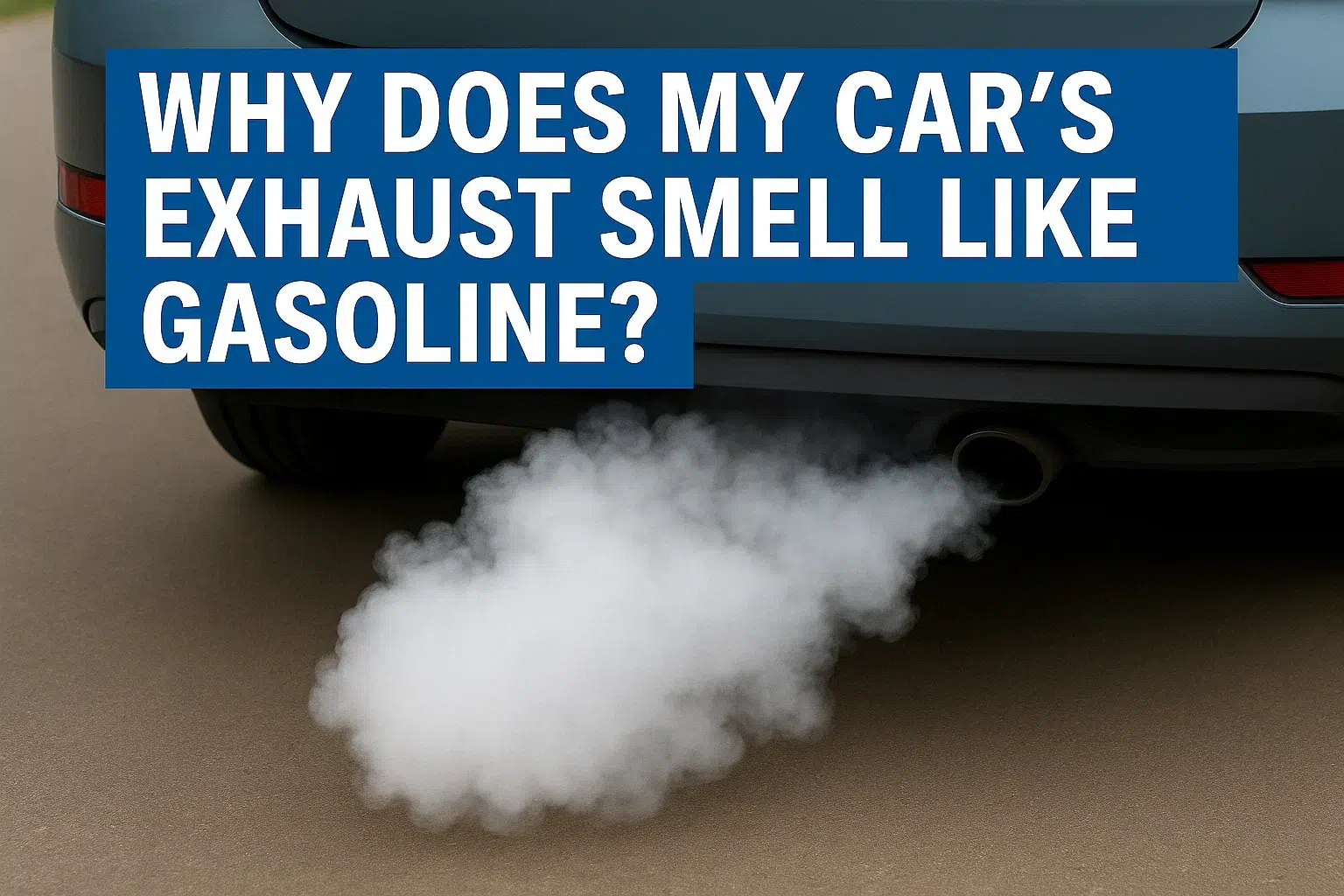If your car is smoking but not overheating, it could be due to an oil leak, burning coolant, or a faulty gasket. While the engine may not overheat, the smoke signals a potential issue that requires attention to prevent further damage.
Seeing smoke coming from your car’s engine can be scary, even if the temperature gauge looks fine. This situation, known as car smoking but not overheating, is confusing and worrisome for drivers.
Engine smoke doesn’t always mean a big problem, but it’s something to check. It could be from small issues like oil leaks or serious problems that need quick action.
Knowing why your car is smoking is key to keeping it running well and staying safe. In this article, we’ll look at the possible reasons and how to fix them.
Understanding Different Types of Smoke from Your Car
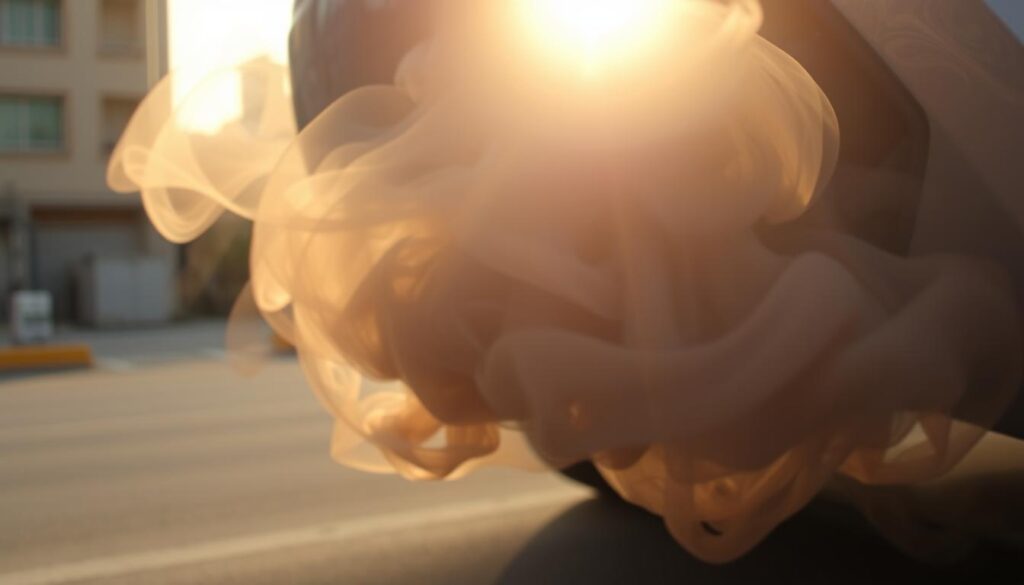
The color of the smoke from your car is key to finding the problem. If your car is smoking but not overheating, look at the smoke color. It can tell you what’s wrong.
White/Gray Smoke: Condensation vs. Coolant Issues
White or gray smoke often means condensation, which happens in cold weather. But, if it keeps coming, it might be a coolant leak. Check your coolant levels and look for leaks.
Blue Smoke: Identifying Oil Consumption Problems
Blue smoke from your car’s exhaust means your engine is burning oil. This could be because of worn piston rings or valve stem seals. Keep an eye on your oil levels to see if your car is using too much.
Black Smoke: Fuel Mixture and Combustion Issues
Black smoke usually means your engine is getting too much fuel. This could be from a bad fuel injector, a clogged air filter, or engine computer problems. You need to check these parts to find the cause.
| Smoke Color | Possible Cause | Action |
|---|---|---|
| White/Gray | Condensation or Coolant Leak | Check Coolant Levels |
| Blue | Oil Consumption | Monitor Oil Levels |
| Black | Rich Fuel Mixture | Check Fuel Injectors and Air Filter |
Common Causes of Smoke When Your Engine Isn’t Overheating
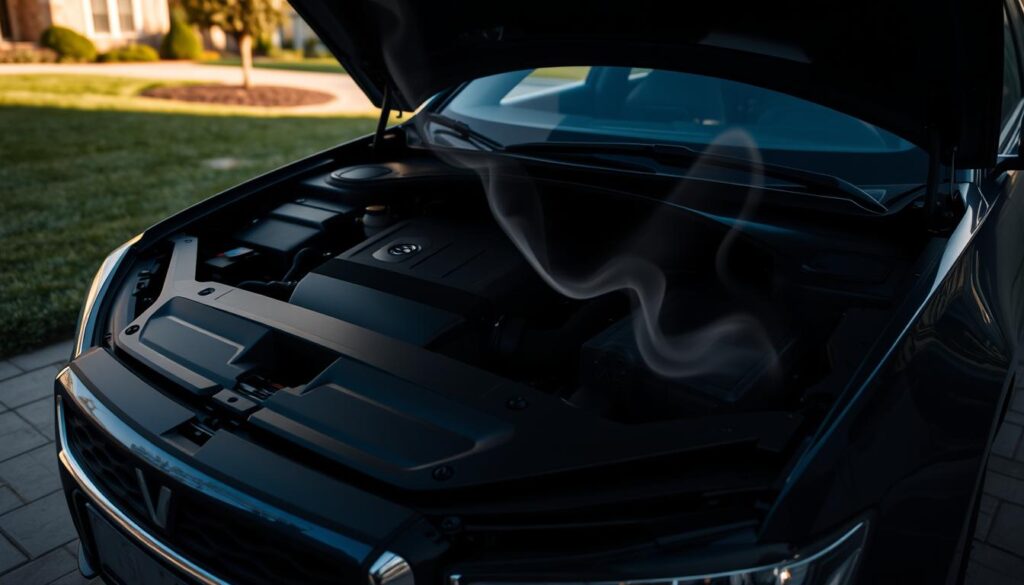
Smoke coming from your car without the engine getting hot can be confusing and scary. There are many reasons why this might happen. Knowing these reasons is key to figuring out and fixing the problem.
Oil Leaks on Exhaust Components and Manifolds
Oil leaks onto hot parts of the exhaust or manifolds can cause smoke. This happens when engine oil gets on these hot spots and turns into vapor. Worn engine parts like gaskets or piston rings can lead to these leaks. It’s important to check for oil leaks and fix them quickly to avoid more damage. Plus if your car is suffering from any other type of damage like hail, mold then you must check out our blog on fixing hail damage and removing mold from car.
Coolant Seepage and Burning Antifreeze
Coolant leaking into the engine or onto hot parts can also make smoke. If coolant gets burned with fuel, it smells sweet. This might mean there’s a problem with the head gasket, engine block, or intake manifold gasket.
Electrical Short Circuits and Burning Wires
Smoke can also come from electrical problems like short circuits or burning wires. This usually smells like burning and doesn’t raise the engine’s temperature. Faulty wiring, corroded connections, or broken electrical parts can cause this. If you see smoke without the engine getting hot, check the electrical system.
Key Takeaways:
- Oil leaks onto hot engine parts can cause smoke.
- Coolant leakage can lead to smoke if burned along with fuel.
- Electrical malfunctions can produce smoke without overheating.
Why Is My Car Smoking but Not Overheating? Location Matters
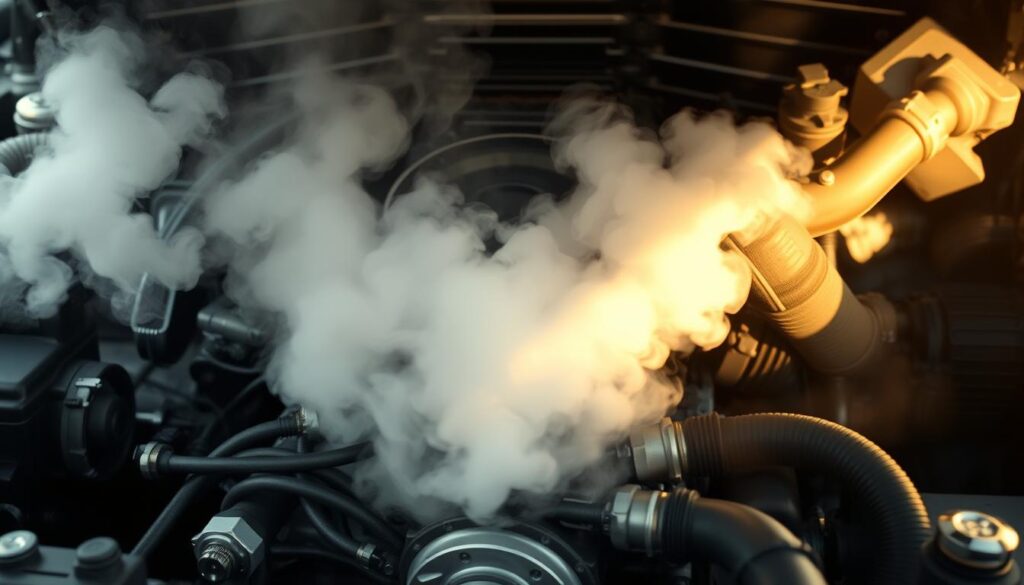
Smoke from different parts of your car can mean different things. Knowing where the smoke is coming from is key to finding the problem. If your car is smoking but not overheating, figuring out the source is important.
Engine Bay Smoke: Pinpointing the Source
Smoke from the engine bay can point to several issues. It might be an oil leak onto hot engine components, a broken PCV (Positive Crankcase Ventilation) system, or a coolant leak. A close look at the engine bay can help find the smoke’s source.
- Check for oil leaks around the engine and its parts.
- Inspect the PCV system for any blockages or damage.
- Look for signs of coolant leakage, such as green or yellow fluid.
Tailpipe Smoke: What Your Exhaust Is Telling You
The color and type of smoke from the tailpipe can tell you a lot about your engine. Blue smoke usually means oil is being burned, while black smoke points to too much fuel. White smoke might mean coolant is getting into the engine.
- Blue smoke: Check for oil leaks and worn engine parts.
- Black smoke: Look at the fuel system for problems like bad injectors.
- White smoke: Check for coolant leaks and head gasket issues.
Undercarriage and Wheel Well Smoke: Brake and Transmission Issues
Smoke from under the car or wheel wells often means brake or transmission problems. Brake pads that are too hot can cause smoke, as can a slipping transmission or low fluid levels.
- Inspect brake pads for wear and overheating.
- Check transmission fluid levels and condition.
Step-by-Step Troubleshooting Guide for a Smoking Car
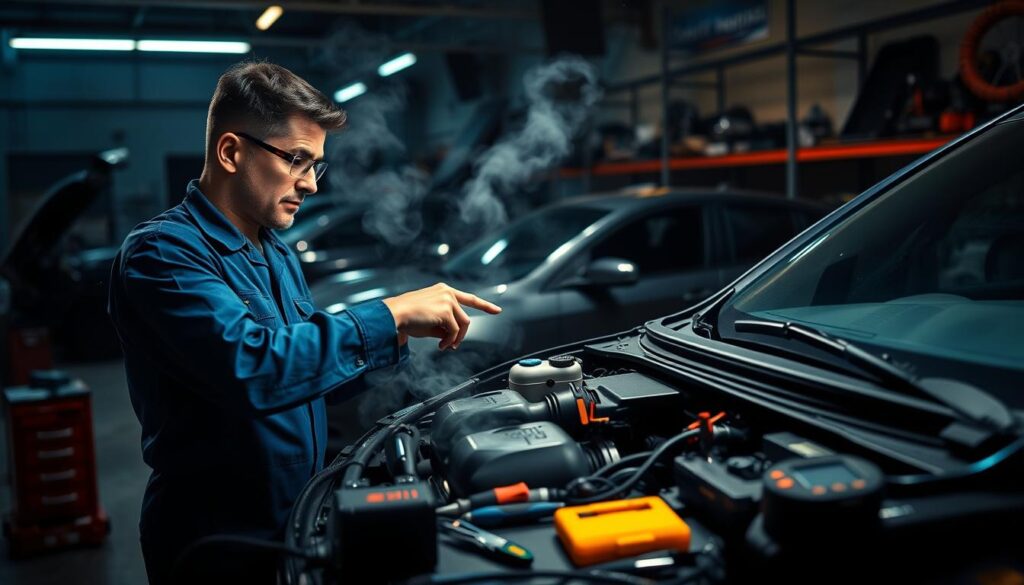
If your car is smoking but not overheating, you need a clear plan to find the problem. This guide will help you diagnose the issue safely and effectively.
Safe Inspection Procedures When Engine Is Hot
First, make sure the engine is off and slightly cool to avoid burns. Wear gloves and eye protection. Look for any damage or wear on the engine and its parts.
Checking Fluid Levels and Identifying Leaks
Check the levels of engine oil, coolant, and transmission fluid. Low levels or leaks can show where the smoke is coming from. Look for drips or puddles under the car and check the fluid condition.
Using Smell and Color to Diagnose Problems
The color and smell of the smoke can give you important clues. Use your senses to figure out what’s wrong.
The Smell of Burning Oil vs. Coolant
Burning oil smells thick and has a blue-gray smoke. Coolant leaks smell sweeter and produce white or greenish smoke. Knowing the smell can help you find the problem.
Electrical Burning Odors and What They Mean
Electrical burning smells like burning plastic or wire. This usually means there’s a short circuit or a faulty electrical part.
| Symptom | Possible Cause | Action |
|---|---|---|
| Blue-gray smoke | Burning oil | Check oil levels and look for leaks |
| White or greenish smoke | Coolant leakage | Inspect coolant level and system for leaks |
| Burning plastic or wire smell | Electrical issue | Check for short circuits or faulty components |
DIY Fixes for Common Smoking Issues
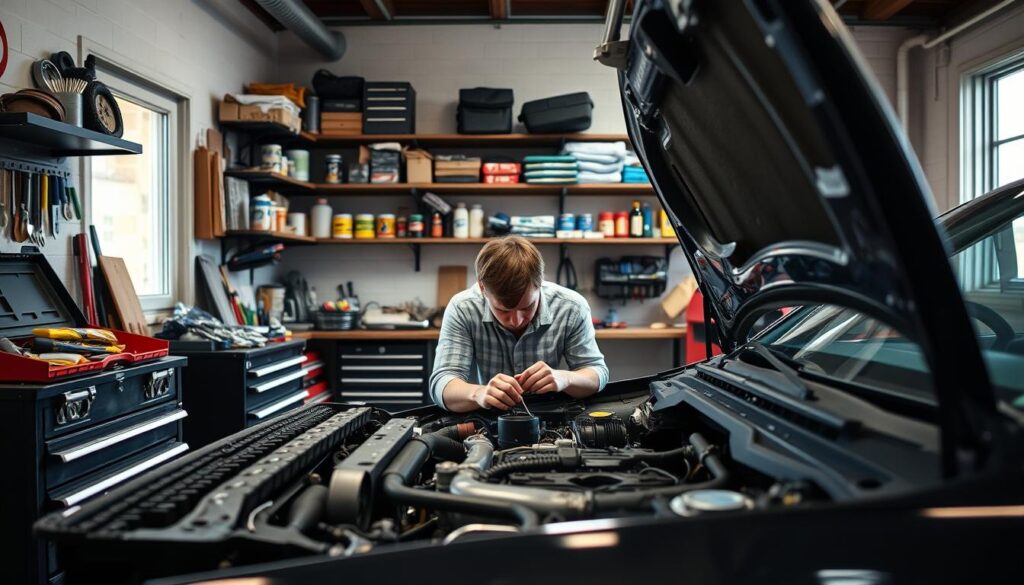
Many car smoking problems can be fixed by yourself. This can save you both time and money. Before you take your car to a mechanic, try these easy fixes first.
One simple fix is to check and tighten loose caps and connections. Make sure your oil cap, coolant reservoir cap, and other connections are tight. A loose cap can lead to smoke, often from the oil or coolant system.
Tightening Loose Caps and Connections
Look in your car’s manual to find these caps and connections. Tightening them might solve the smoking problem. For example, a loose oil cap can spill oil onto hot engine parts, causing smoke.
Replacing Damaged Hoses and Gaskets
Smoking can also be caused by damaged hoses and gaskets. Check these parts for wear or damage. Replacing them is a bit more work but is doable on your own.
Cleaning Oil Spills on Hot Surfaces
Oil spills on hot surfaces can also cause smoke. Clean them up with a degreaser and rag. Be careful when working with hot surfaces.
| DIY Fix | Description | Skill Level |
|---|---|---|
| Tightening Loose Caps | Secure loose caps to prevent spills | Easy |
| Replacing Hoses and Gaskets | Inspect and replace damaged parts | Moderate |
| Cleaning Oil Spills | Use degreaser to clean spills on hot surfaces | Easy |
FAQs
Can I drive if my car is smoking but not overheating?
If your car is smoking but not overheating, it’s best to pull over and investigate the source of the smoke. Continuing to drive could lead to further damage, so safely stop and check for issues.
What do I do if my car starts smoking but not overheating?
If your car starts smoking but the temperature gauge isn’t showing overheating, pull over immediately. Check for leaks or burning odors, and if you’re unsure, it’s best to call for roadside assistance.
Why is smoke coming from my car?
Smoke from your car can come from several sources, such as an oil leak, overheating engine, or burnt coolant. Identifying the smoke’s color (blue, white, or black) can help pinpoint the cause.
How to stop engine smoke?
To stop engine smoke, first identify the cause — such as a coolant leak or oil burning — and address the underlying issue. Regular maintenance, like checking for leaks and ensuring proper fluid levels, can prevent engine smoke.
Conclusion: When to Drive and When to Tow
Deciding whether to drive or tow a smoking car depends on the problem. If it’s just a small leak or a loose cap, you might be okay to drive to a car repair shop. But, if the smoke is thick or smells like burning, it’s safer to tow it to prevent more damage.
When your car is smoking but not overheating, finding the smoke’s source is key. Look in the engine bay, tailpipe, and undercarriage. If you’re not sure what’s wrong or how bad it is, get a mechanic’s opinion.
If your car is smoking but not overheating, watch it closely. If the smoke keeps coming or you notice other odd sounds or shakes, it’s time to call a pro. Knowing when to drive and when to tow can help avoid expensive fixes and keep you safe.

I am Tushar Balchandani, founder of Car Info Expert and someone who has been working extensively in the car industry as a car expert for 15 years. My aim is to provide useful truthful and reliable information to the readers based on my real experiences and hands-on experience. From buying tips to maintenance guides, I help readers make confident car-related decisions.

